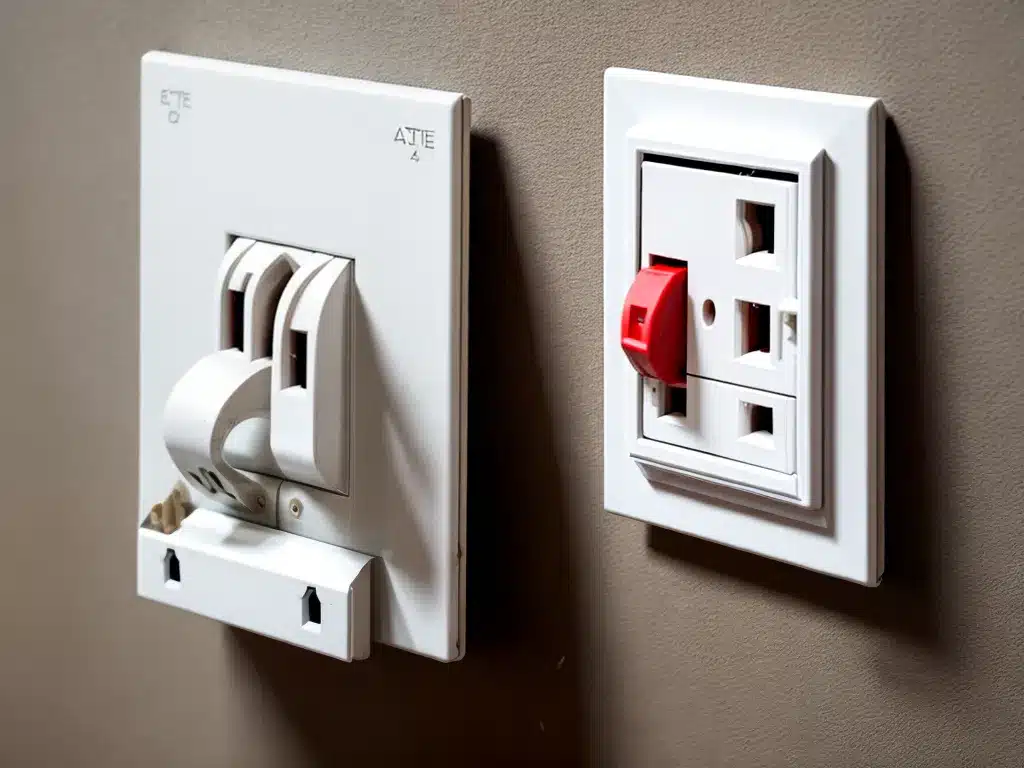 Reduce Electrical Fires By Replacing Old Sockets” />
Reduce Electrical Fires By Replacing Old Sockets” />
How to Reduce Electrical Fires By Replacing Old Sockets
Why Replacing Old Sockets Reduces Electrical Fires
Electrical fires are a major hazard in homes with outdated and damaged electrical infrastructure. By replacing old, worn out electrical sockets, you can significantly reduce the risk of electrical fires starting in your home.
There are a few key reasons why old sockets increase fire risk:
-
Degraded insulation: The insulation inside old sockets can degrade over time from heat, abrasion, and exposure to moisture. This allows wires inside the socket to arc and spark, which can ignite fires.
-
Loose connections: The points where wires connect to sockets can become loose over years of plugging in and unplugging devices. Loose connections interrupt electrical flow, causing heat buildup and potential sparks.
-
Higher load: Older sockets often can’t handle the power demands of modern devices and appliances. Drawing too much current through outdated sockets creates excessive heat that can melt plastics and ignite fires.
-
Faulty grounding: Outdated sockets sometimes lack proper grounding. This removes a key safety protection that prevents electric shocks and contains electrical faults.
Replacing old sockets fixes these common fire hazards. New sockets have undamaged insulation, tight connections, sufficient current capacity, and proper grounding. Installing new sockets brings your home’s electrical system up to modern safety standards.
How to Identify Problem Sockets Needing Replacement
Knowing when to replace outdated or damaged sockets is the first step in reducing electrical fires in your home. Here are some telltale signs that indicate a socket should be replaced:
-
Cracks, burn marks, or discoloration on the plastic socket cover. This can indicate overheated wiring or previous electrical faults.
-
Loose receptacles that move when you plug in devices. Loose connections are major fire hazards.
-
Frequent circuit breaker trips when using the socket, indicating it can’t handle the current load.
-
Buzzing, sizzling, or humming noises coming from the socket. These sounds often precede arcing faults.
-
Flickering lights when using the socket, signalling improper connections.
-
GFCI outlets that won’t reset or frequently trip, meaning grounding issues.
-
Scorch marks or melted plastic on plug prongs, which show heat damage.
-
Frequently overheating plugs and cords.
-
Tingling or shocking sensation when touching appliances plugged into the socket.
Any socket displaying these warning signs should be replaced right away to avoid potential electrical fires.
Safely Replacing Old Sockets Yourself
With some basic DIY skills, you can replace outdated or faulty sockets on your own:
Step 1: Turn Off Power
Switch off the circuit breaker for the socket you’ll be replacing. Use a non-contact voltage tester on the wires to confirm power is off.
Step 2: Remove Old Socket
Unscrew the socket from the electrical box and disconnect the wires. There are usually two screws on the sides of the socket.
Step 3: Prep Wires
Strip about 1/2 inch of insulation from the ends of the wires if needed, then twist the bare wire strands together tightly.
Step 4: Connect Wires
Attach the wires to the new socket by either screwing them into the sides or inserting them in the push-in wire holes in back. Follow the socket’s labeling to match up ground, neutral, and hot.
Step 5: Mount New Socket
Carefully tuck wires into the electrical box, then mount the new socket securely using the included screws.
Step 6: Test Operation
With the power back on, plug in a lamp and test that the socket works properly. Also check nearby outlets since they may be on the same circuit.
When to Call an Electrician
If the wiring in the socket is very old, burnt, or damaged, it’s safest to call a licensed electrician. They can inspect the full circuit and replace any wire that could be hazardous. Electricians can also:
-
Install GFCI outlets where needed for added protection.
-
Ensure proper grounding on older electrical systems.
-
Balance multi-wire branch circuits to handle added loads.
-
Bring overloaded circuits up to code by splitting them.
Replacing old electrical sockets is a straightforward DIY project for most homeowners. But for large-scale electrical repairs or upgrades, consult a qualified electrician. They have the expertise to fix underlying issues that could be causing socket hazards.
The Benefits of New Sockets
Upgrading to modern electrical outlets brings many benefits beyond fire safety:
-
Child safety – New tamper-resistant sockets prevent kids from sticking objects in them.
-
Electrical capacity – New 15 amp and 20 amp sockets support today’s power-hungry devices.
-
Convenience – Features like USB charge ports, night lights, and smart controls add functionality.
-
Energy efficiency – New sockets maintain tighter connections for less wasted energy.
-
Appearance – Fresh new outlets just look nicer than old discolored ones.
Replacing worn out electrical sockets is one of the best ways to protect your home and family from electrical fires. Investing in new, high-quality sockets brings your home up to current safety standards.
